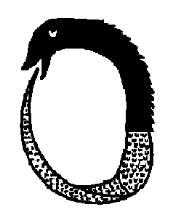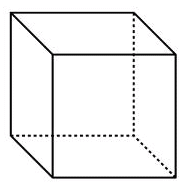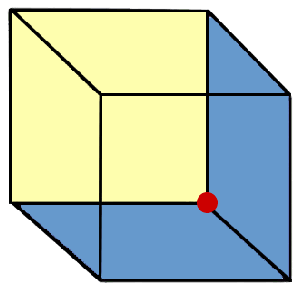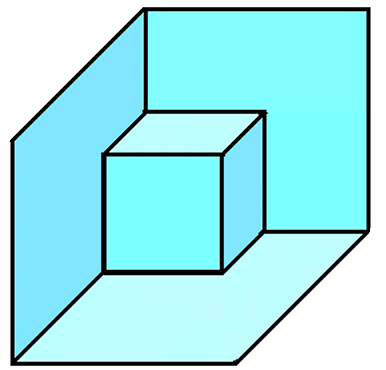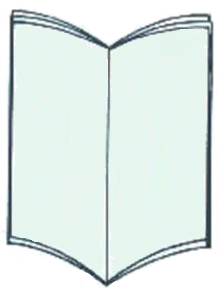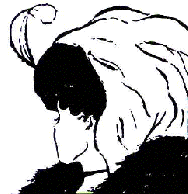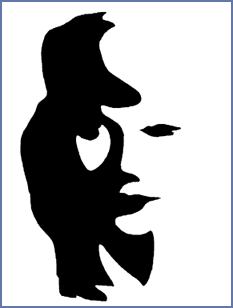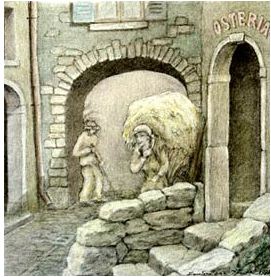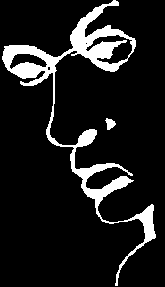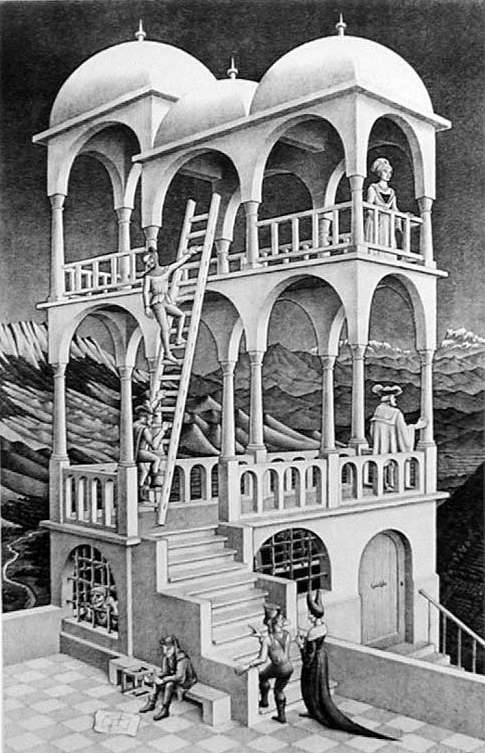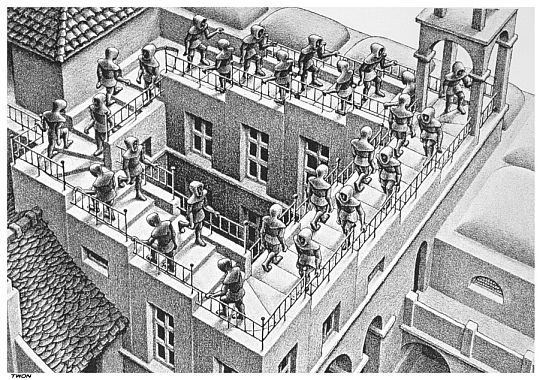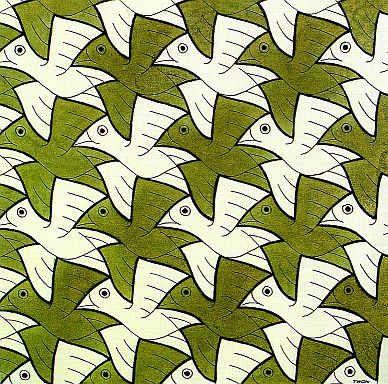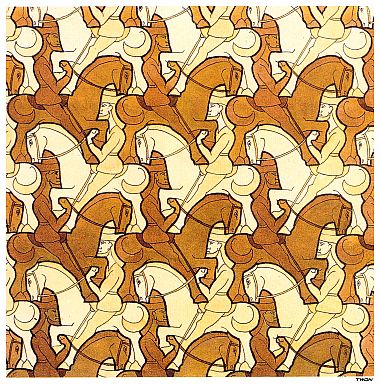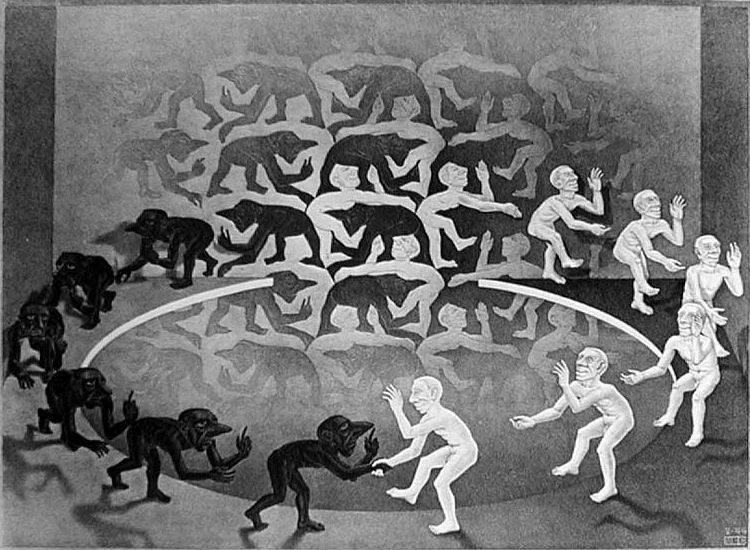The Escher View "East is East, and West is West, and never the twain shall meet." We have all seen images such as the ones below, where what we see changes with the blink of an eye. The two on the left are called the "Necker Cube" which may be seen in two ways. The yellow surface and the red dot can be either on the outside or the inside of the cube, depending on how you look at it. There are variations on this theme such as the next one on the right. Somewhat similar is the last on the right which can be seen from the inside of the booklet or the outside.
The two views or images within the one image are mutually exclusive -- only one perspective is possible at a time. If we spend enough time with one, we will eventually be able to change our view at will. But it may also happen that the alternate image remains elusive for a time.
The first one of these is fairly well-known but here the two images are not as easily seen or switched. It may be that the two alternate images activate either the left- or the right-brain as in these below.
Try speaking out the names of the colors in the first image. If you are predominantly right-brained, you will tend to say the color of the word, whereas a left-brained person will likely say the word itself even though its actual color is different. M.C. Escher (1898-1972) was well aware of these perceptive anomolies and depicted his own versions of it, for example in mixing spatial dimensions, also making things somewhat more complex.
But staying with two dimensions he added complexity to these drawings by having elements interlocked with one another.
For the above images we are looking at a two-dimensional image which can interpreted in two different ways by alternating "figure" and "ground", or the specific item looked at and its context or setting. While it is fairly easy to switch between alternate images in two dimensions, when we apply this to a three-dimensional image the alternate view becomes invisible to us. The Escher view of Quantum Polarity demonstrates that the reality we perceive and live in is actually embedded in, and part of, a larger reality composed of two interlocked realities. We are aware of only one of these realities. M.C. Escher depicted this in many of his drawings but in the one below he is saying something more. Initially the white entity and the black entity are unaware of each other, but when they detach themselves from the other, the possibility emerges for mutual acknowledgement and coooperation.
This image depicts two opposites that profoundly affect each other but initially are completely unaware of it. Everything that one entity does has an instant impact on the other, but within their own world this cannot be accounted for. Only when there is a detachment from the old and an entry into the larger view of things is there hope for an awareness of more. This situation in this drawing reminds me of Plato's cave in The Republic where the cave-dwellers can only see shadows of things, and dismiss the claims of those who have a larger view. Quantum Polarity unlocks the entry into this larger landscape. It concretely depicts the dynamics between elements of the polarity of specific polarities and beckons us to wake up from our entanglement within our world and open the door to a larger reality. Escher was not the only artist to communicate this. Starting with the impressionists, many artists such as Van Gogh and Picasso tried to wake us up to our own cognitive process, to tell us that what we see depends on how we see. Being a graphic artist Escher did it more directly, trying to include both artistic and logical elements, providing an important bridge between the two. In his drawings Escher appeals both to the artist and the scientist. Could it be that Escher's work points the way to how Kipling's unbridgeable gap might be spanned?
www.quantumpolarity.com August 6, 2011
|
